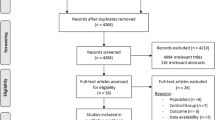Abstract
Despite the many advances in scientific research over the last several decades, cutting edge technologies and therapeutics often take many years to find their way into widespread use. The dissemination and uptake of best practices into clinical care is sometimes a neglected component of research that is essential to improve the population’s health. Type 2 translational research, sometimes called “Proof in Practice Research,” seeks to maximize the yield of what has been learned from the bench and from carefully controlled clinical trials and to extend those benefits to a larger population. One aspect of type 2 translational research, sometimes called evidence implementation or implementation science, applies what has been learned about clinical medicine to achieve best practices across providers and health systems. This article describes evidence implementation as applied to osteoporosis care, drawing from several published or ongoing studies to illustrate challenges and potential solutions in improving the quality of osteoporosis care.




Similar content being viewed by others
References
Sung NS et al (2003) Central challenges facing the national clinical research enterprise. JAMA 289(10):1278–1287
Eccles MP et al (2009) An implementation research agenda. Implement Sci 4:18
Curtis JR et al (2009) Do physicians within the same practice setting manage osteoporosis patients similarly? Implications for implementation research. Osteoporos Int 20(11):1921–1927
Murray D (1998) Design and analysis of group-randomized trials. Oxford University Press, New York
Kiefe CI et al (2001) Improving quality improvement using achievable benchmarks for physician feedback: a randomized controlled trial. Jama 285(22):2871–2879
Fry RB et al (2007) Racial/ethnic disparities in patient-reported nonsteroidal antiinflammatory drug (NSAID) risk awareness, patient-doctor NSAID risk communication, and NSAID risk behavior. Arthritis Rheum 57(8):1539–1545
Colon-Emeric CS et al (2007) Randomized trial to improve fracture prevention in nursing home residents. Am J Med 120(10):886–892
Warriner A et al (2010) DXA screening and use of osteoporosis medications in two large regional healthcare systems. Arthritis Rheum 62(Suppl 10):S1543
Warriner A et al (2010) Self-scheduling of DXA scans to improve osteoporosis screening in women. Arthritis Rheum 62(Suppl 10):S1006
Warriner A et al. (2011) Allowing patient self-referral of DXA significantly improves osteoporosis screening. ASBMR Annual Meeting 2011, San Diego, CA
Green MC, Brock TC (2000) The role of transportation in the persuasiveness of public narratives. J Pers Soc Psychol 79(5):701–721
Kreuter MW et al (2008) What makes cancer survivor stories work? An empirical study among African American women. J Cancer Surviv 2(1):33–44
Houston TK et al (2011) Culturally appropriate storytelling to improve blood pressure: a randomized trial. Ann Intern Med 154(2):77–84
Outman RC et al (2010) Screening and treatment of glucocorticoid-induced osteoporosis in a large U.S. national pharmacy database. Arthritis Rheum 62:S648
Curtis JR et al (2006) Osteoporosis in the home health care setting: a window of opportunity? Arthritis Rheum 55(6):971–975
http://shef.ac.uk/FRAX. Accessed May 31st, 2008
Curtis JR et al (2007) Challenges in improving the quality of osteoporosis care for long-term glucocorticoid users: a prospective randomized trial. Arch Intern Med 167(6):591–596
Slater MD, Rouner D (2002) Entertainment—education and elaboration likelihood: understanding the processing of narrative persuasion. Comm Theory 12(2):173–191
Acknowledgments
Dr. Curtis receives salary support from the NIH (AR053351) and AHRQ (R01 R01HS018517, R13HS020144-01).
Conflicts of interest
None.
Author information
Authors and Affiliations
Corresponding author
Rights and permissions
About this article
Cite this article
Curtis, J.R. Improving osteoporosis care through multimodal interventions: insights from the University of Alabama at Birmingham Center for Education and Research on Therapeutics. Osteoporos Int 22 (Suppl 3), 445 (2011). https://doi.org/10.1007/s00198-011-1710-2
Received:
Accepted:
Published:
DOI: https://doi.org/10.1007/s00198-011-1710-2




